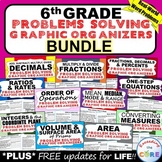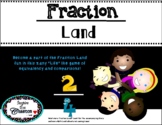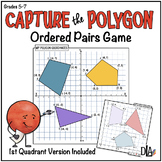16 results
Middle school statistics simulation microsofts
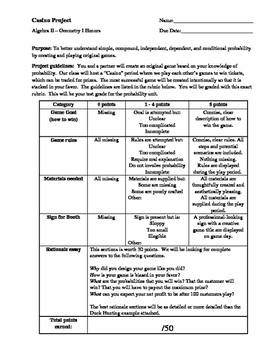
Carnival Probability Project
A project that feels like a game!
Students must create their own game, using probability to ensure THEY are favored to win....much like the house in a casino. Students can make games involving dice, spinners, cards, "fishing" ducks out of a pond, etc.
Assessed skills include: fundamental counting principal, theoretical probability, experimental probability, independent events, dependent events, creativity, writing, presentation. *Students must already know basic probability to complete this
Subjects:
Grades:
8th - 12th
Types:
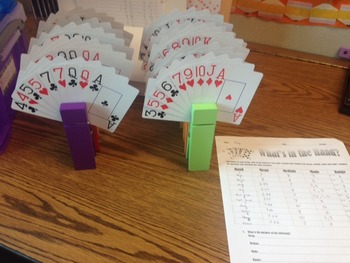
Statistics Mode, Median, Mean, Range Worksheet for Math or Psychology
What's in the Hand: Activity makes learning mode, median, mean, and range fun. You will need two packs of playing cards in order to use 10 different variations. I use giant clothes pins to hold a total of 9 cards for each station. Each student gets a worksheet and is assigned to a group of 4-5 students. Students will complete the first rotation by figuring the mean, median, mode, and range, and then rotate to each other station in about 5 min intervals. At the end they will answer the questions
Subjects:
Grades:
5th - 12th
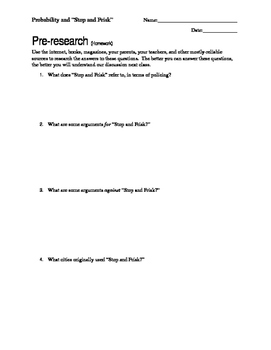
Using Probability to Teach Social Justice
This is an exploratory experiment/activity about basic probability. Students discover the differences between theoretical probability, experimental probability, and reality by taking a hard look at Stop and Frisk in urban areas. Students also deal with independent and dependent events.
By the end of the project, students will be able to:
Articulate the differences between theoretical and experimental probability through prediction and experimentation.
Articulate the differences between indep
Subjects:
Grades:
8th - 12th
Types:
CCSS:
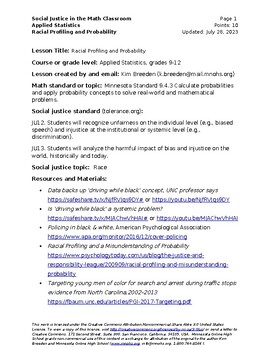
Racial Profiling and Probability (Social Justice Math)
In this assignment, you will investigate racial profiling, or Driving While Black (DWB). African Americans and Latinos/as have complained, filed suit, and organized against what they believe are racist police practices—being stopped, searched, harassed, and arrested because they “fit” a racial profile—they are African American (Black) or Latino/a (Brown). But is this true? How do we know? And can mathematics be a useful tool in helping us answer this question?These questions will be answered usi
Subjects:
Grades:
7th - 12th

Mean Absolute Deviation
This 25-slide PowerPoint presentation describes what Mean Absolute Deviation is and how to calculate it. The lesson uses two sets of sample data that turn out to have the same mean & median and a common range. Mean absolute deviation is introduced as another measurement that will show the difference in the two data sets. The presentation is designed to have students work with the sample data as well so they can learn as they go along. Content is based on common core standard CCSS.Math.Conten
Subjects:
Grades:
6th
CCSS:
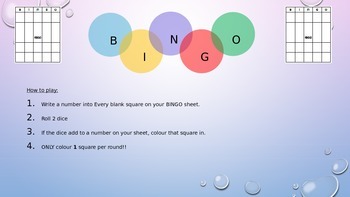
2 Dice Probability Bingo Game
Simple Bingo game where students can use a bingo game as an experiment to discover which values are the highest probability in either the sum of 2 dice or the difference of 2 dice.
Students fill in the sheets with values they think will come up. They get to fill in one square per round if the have a value that matches the sum/difference of the dice. After the first game is played, it should be played again to allow students to use their understanding to improve their chances. Eg. using more
Subjects:
Grades:
5th - 8th
Types:
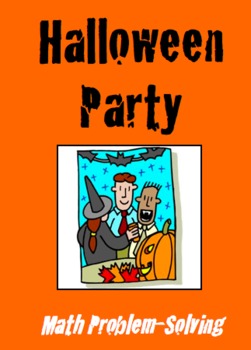
Halloween Party - Math Problem Solving
In this activity, students will be planning a Halloween party for their class. They will need to "purchase" supplies for their party using a budget that you set. I set a budget that forces the students to make budget choices, i.e., I don't give them enough to buy everything they want. Students will work in partners to plan their party, making decisions based on their budget constraints. Students are also asked to perform some data analysis on the party choices. This is a good activity to do
Subjects:
Grades:
3rd - 7th
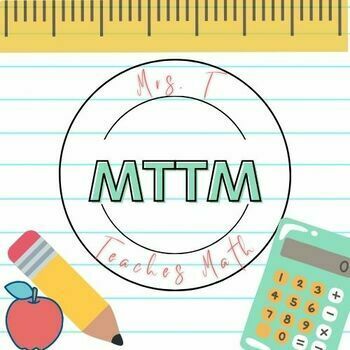
Samples/Populations/Predictions FUN Math Activity Project (7th grade) EDITABLE
This is a great project to use as an in class activity to review making predictions based on samples. You could use this as an individual or group assignment. It would also be very easy to assign online, if you have students learning in the virtual setting.
Subjects:
Grades:
7th
Types:

Interactive Online ELab Simulations Lab - Shopping Unit Rates Lab
In this FREE online interactive simulation provided by PhET, developed by the University of Colorado, students will explore unit rates through the process of buying goods. Students will explore how shopping uses unit rates to determine the price of various goods. Students will need a computer, tablet or IPad. These simulations were designed for IPad use. This handout goes directly with the Elab and contains directions on accessing the lab online as well as directions on how to complete the lab.
Subjects:
Grades:
5th - 8th
Types:
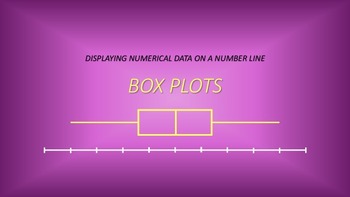
Numeric Data: Box Plots
This 29-slide PowerPoint presentation covers the basics of Box Plots in good detail. The lesson is based on math Common Core standard CCSS.Math.Content.6.SP.B.4 under the domain of Statistics and Probability. It begins with a review on number lines. The purpose & components of Box Plots are discussed next. Then, using sample data, it takes you step through step in determining the 5-number summary and constructing the Box Plot. This lesson could be used for a full class period. I recommend th
Subjects:
Grades:
6th
CCSS:
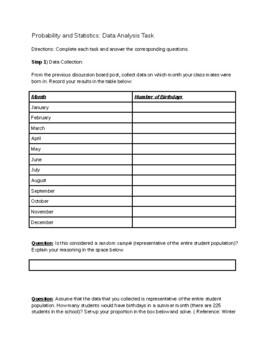
Birthday Probability: Data Analysis Task/Project
This great project is specifically designed for use during the Statistics and Probability unit for 7th grade. Purchase of this product will provide you with a fully editable document that you can edit to your liking.
Subjects:
Grades:
6th - 8th
Types:
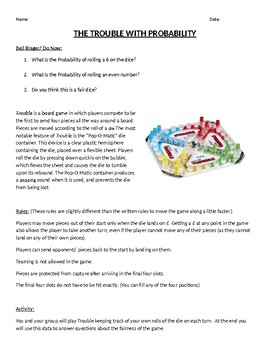
Trouble with Probability
Students will use the popper board game to study the probability of a fair dice.They will play a (speed-up) version of the classic board game to determine how many times each number of a die appears. They will calculate the percentage of occurrence of each number to determine if the die is fair. Follow up questions about how to change the probability of the die are also included as either homework or an extension of the activity.
Subjects:
Grades:
5th - 8th
Types:
CCSS:

A Fishy Situation
The multiple day activity is a simulation requiring students to collect, organize, categorize, and analyze data concerning a fish population in a lake. Students will discuss sampling, create various graphs, and create their own research plan. Career ties may be biologist, state wildlife and fisheries agents, and environmentalist.
Subjects:
Grades:
6th - 8th
Types:
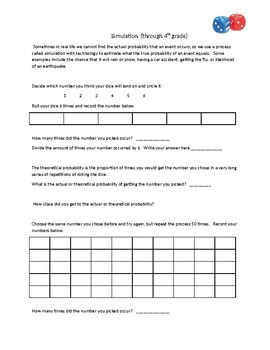
Probability Intro to simulation using dice
This is the perfect introductory activity to simulation and probability. It could be used in Algebra 2 and basic Statistics courses. It could also be used in 6th through 8th grade to introduce probability.
Subjects:
Grades:
6th - 12th
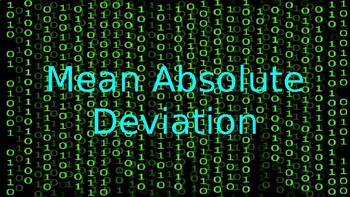
Mean Absolute Deviation
A concrete explanation for the topic of mean absolute deviation. Uses Microsoft Power Point with an animation to help students develop the abstract idea in statistics that is mean absolute deviation. I created this for my 6th graders and the idea just clicked with them after this explanation. Can be accompanied with a youtube video of Good Mythical Morning where Rhett and Link play taste test games and throw dart for their guesses.
Subjects:
Grades:
6th - 7th

Design and Use a Simulation to Generate Compound Event Frequencies
7th Grade Standard 7-SP8c
The activity includes step by step instructions for using TI-73 or TI-83/84 graphing calculators and random digits as a simulation tool to approximate the answer to the question: If 40% of donors have type A blood, what is the probability that it will take at least 4 donors to find one with type A blood?
Subjects:
Grades:
7th
Types:
CCSS:
Showing 1-16 of 16 results

